Every year around five million hawks, eagles, kites and other birds of prey from Canada and the USA quite literally take off for warmer climes to the south – and all of them pass through a long, narrow corridor in the state of Veracruz, between the Sierra Madre Oriental and the Gulf of Mexico.
It took a Mexican organization named Pronatura 32 years to discover and verify this. The group now has find an ideal spot for observing and counting one of the most spectacular annual migrations in the world.
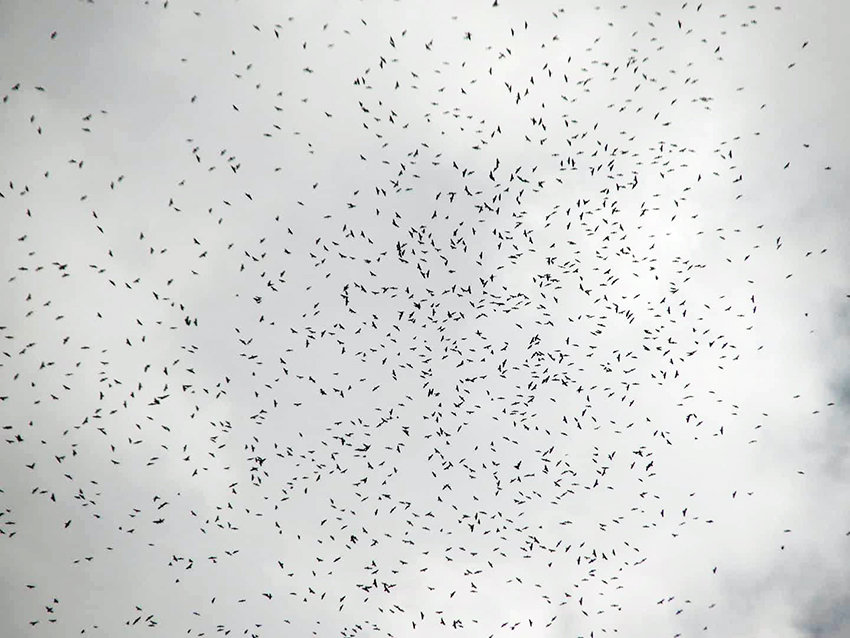
If you visit Pronatura’s observatory in Veracruz, you can see “clouds” of hawks, kites, ospreys, turkey vultures, and many other birds through most of September, October, and November.
Energetic songbirds
These raptors, of course, are not the only avifauna heading south. Songbirds migrate to and from the same parts of the Americas, but they take more direct routes. Most of them fly straight across the Gulf of Mexico, covering a staggering distance of 800 kilometers in less than 20 hours.
This takes a lot of energy and a lot of wing flapping. Hawks and other raptors prefer a much lazier approach to flying when they can find it, spending most of their time soaring and gliding.
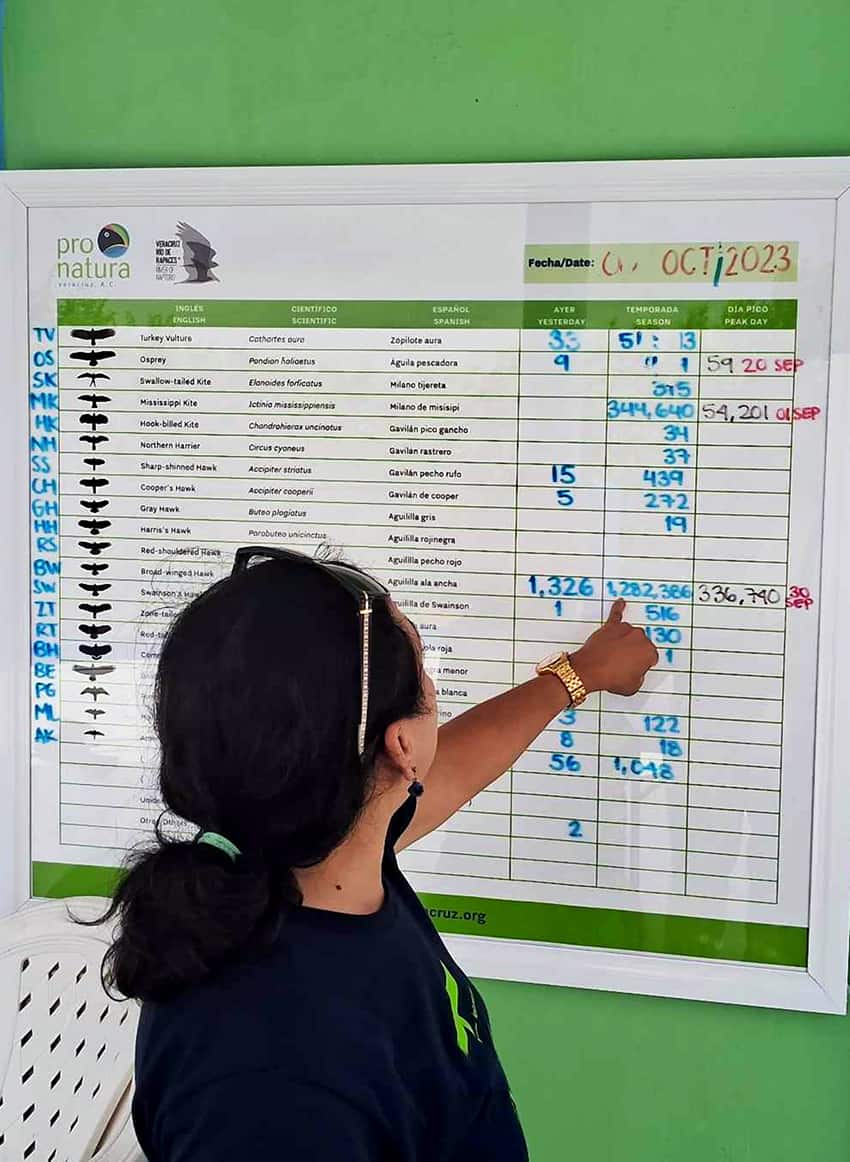
As they make their way up and down the continent, raptors are always on the lookout for thermals, columns of warm air that lift them to a height of approximately one kilometer. From here they glide in the direction they want to go until they are around 300 meters off the ground. Now they look for a new thermal and up they go again. This approach keeps them going in the right direction with a minimal loss of energy.
Kettles of rising birds
A column of hot air filled with hundreds of rising birds is called a “kettle” by bird watchers and the best place to see kettles is the Observatorio de Aves Migratorias Dr. Mario Ramos, located in the little town of Chichicaxtle, Veracruz.
Manuel Basurto, an avid bird watcher living in Guadalajara, recently flew to the city of Veracruz where he and his wife rented a car and drove to Chichicaxtle.
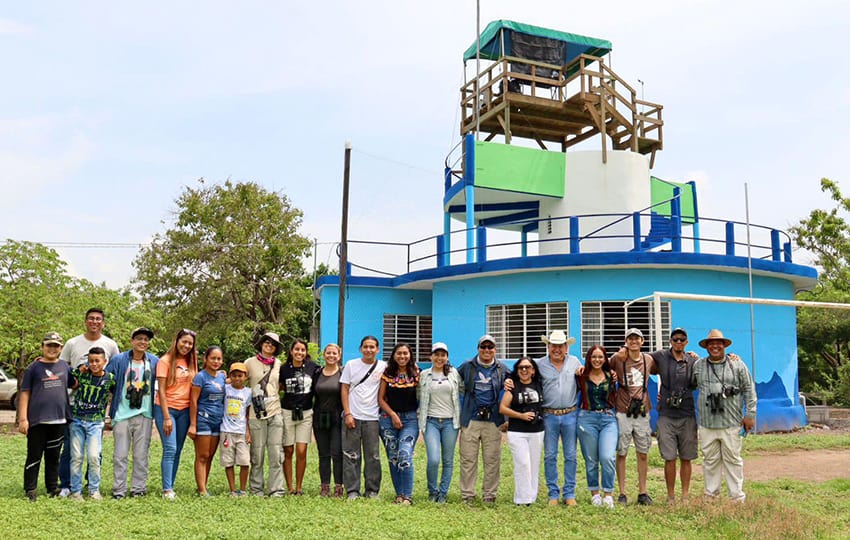
“The observatory is located 20 or 30 kilometers from the ocean and is open from 9:00 a.m. to 6:00 p.m.,” Basurto told me. “You pay a small fee of 100 pesos and they lend you binoculars and give you a raptor guide, so you have everything you need to see the birds. There are also staff there to tell you which birds are passing through and how to differentiate them. and the fee is valid for the whole day, so you can leave for lunch and come back. By the way, they have people there who speak both Spanish and English.”
The building, Basurto explained to me, has a multi-use room on the first floor, where they give presentations, and the rest of the building is for visitors, except the very top platform, which is only for the official bird counters.
Clicking and shouting
“It was incredible,” said Basurto. “We were looking up at the sky and seeing clouds of birds passing over us and the counters were shouting: ‘500 Mississippis! 200 hundred kestrels! 5,000 broadwings!’”
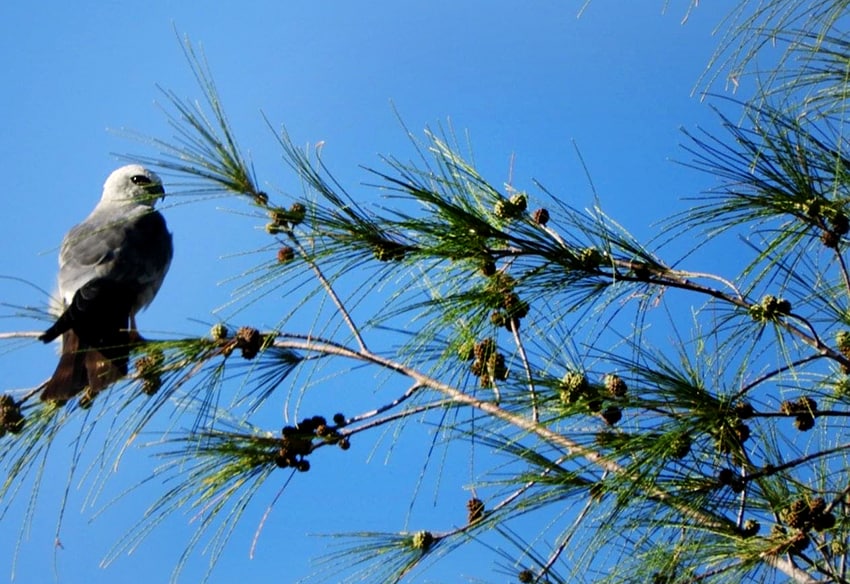
To reach this level of proficiency, the counters receive a great deal of training. They work at it for three years before being accepted as official counters.
“The migration is not constant,” Basurto went on. “The peak hours are maybe 12:00 p.m. to 4:00 p.m. So it may be quiet in the observatory and then suddenly you hear clicking all around you, so you know it’s time to grab your binoculars and look at the sky.
“The counters don’t count just one species. They actually count all the species that are passing. They might have three clickers in one hand and another clicker tied to their belt. And, of course, they know exactly which clicker goes with each species. The whole thing was amazing.”
All the way to Argentina
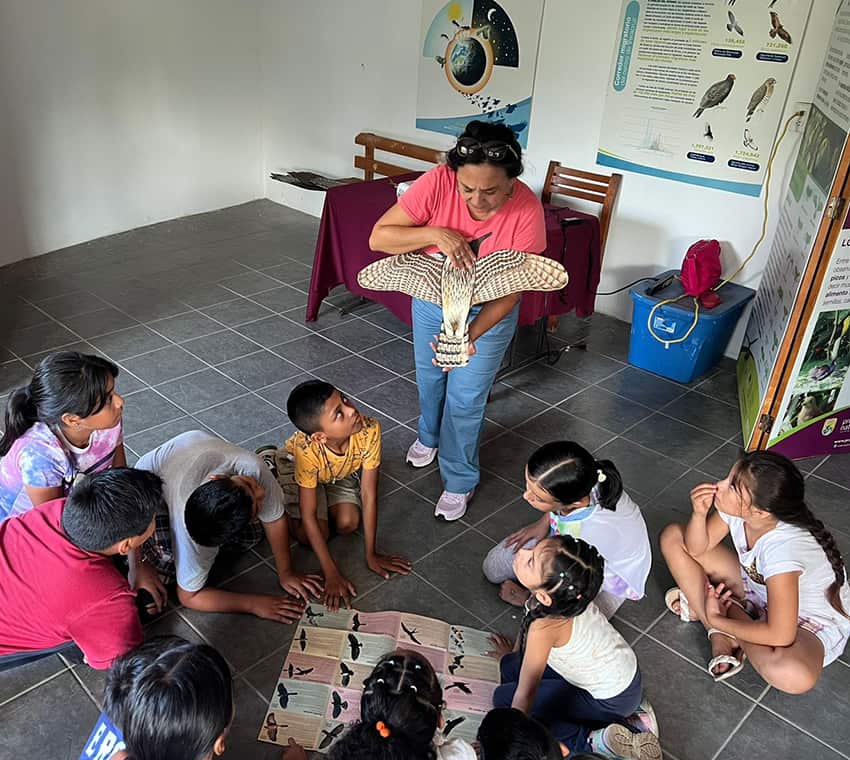
I asked Basurto where the raptors go after they pass this point in Veracruz.
“Some stay in Mexico,” he said, “and some in Central America. There are two other observation points further south. One is in Costa Rica and one is in Belize. I understand that some broadwing hawks go all the way down to Argentina. Then in the Spring, all of them come back following the same route, but the air currents are warmer, so the birds fly at a much higher altitude and are very difficult to see.”
Flying bird men
The raptor flyway was only identified a few decades ago, but the people of Veracruz believe pre-Colmbian peoples were well aware of it.
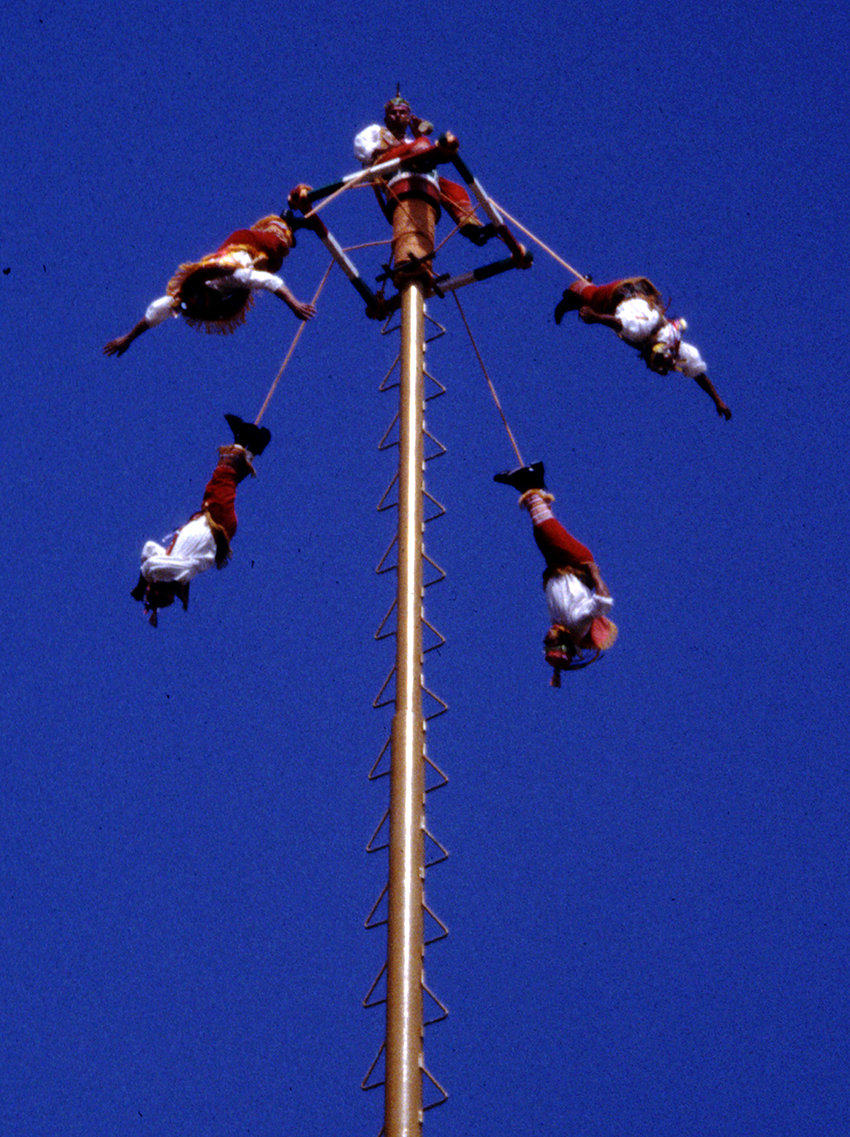
“The ‘Voladores de Papantla’ (flying bird men) imitate these soaring birds,” I was told by the observatory coordinator, Yumei Cabrera. “The pole they are attached to represents the thermal, and the voladores are the migrating raptors.”
Modern awareness of this phenomenon was sparked in 1990 when a group of youths living in Jalapa, Veracruz noticed this migration during their excursions. They started taking notes and keeping track of species and when they appeared.
“In 1991”, Cabrera told me, “they decided it was time to start seriously monitoring the migration. So they carried out experiments in spring and autumn to see what might be the best time to count them and they settled on autumn. Then they looked for the best observation point. They tried many places over several years and finally chose two sites: Cardel and Chichicaxtle, here in Veracruz.”
I learned that the Cardel Observatory is dedicated to scientific research, while the Mario Ramos Observatory in Chichicaxtle leans more toward education, with an audio-visual room and free workshops for local children.
“The best time to come here is from mid-September to mid-October,” Cabrera told me. “I recommend that people plan on staying more than one day. You may be lucky the first day. If not, you are sure to see big numbers the next day.”
No reservation is necessary to visit the observatory, but it is always better to call them in advance (at 296 116 9168) so they can plan ahead. To get there, just input Migratory Bird Observatory Dr. Mario Ramos to Google Maps. It’s less than an hour’s drive from Veracruz City.
The writer has lived near Guadalajara, Jalisco, since 1985. His most recent book is Outdoors in Western Mexico, Volume Three. More of his writing can be found on his blog.
